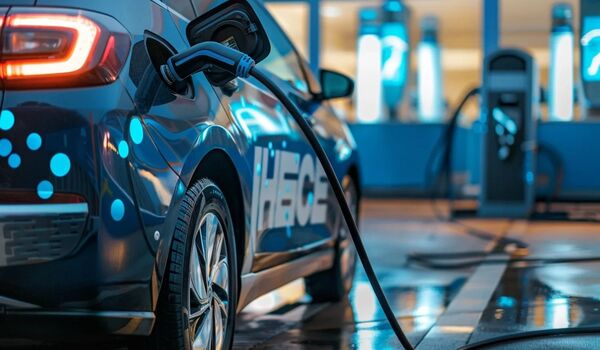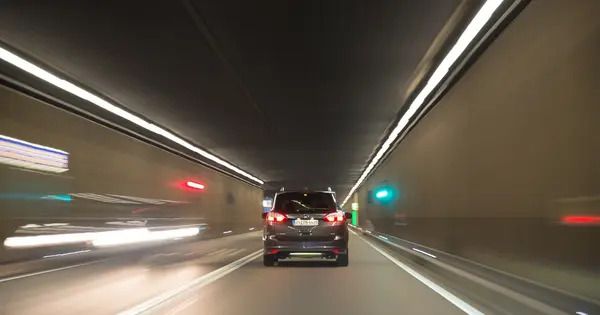In addition to electric vehicles, hydrogen-powered vehicles are viewed as a viable option to conventionally driven automobiles. However, an increase in the number of such automobiles with fuel cells (fuel cell electric vehicles – FCEVs) will create entirely new hazard scenarios, particularly in tunnels.
In the HyTRA project, Graz University of Technology (TU Graz) researched what types of accidents involving hydrogen-powered vehicles in tunnels are plausible, what risks exist for humans and the tunnel structure, and what precautions may be done to reduce these risks. The project was supported by the Austrian Research Promotion Agency (FFG), the Federal Ministry of Climate Protection, Environment, Energy, Mobility, Innovation, and Technology (BMK), and ASFINAG.
Our investigations have shown that although the hazard scenarios involving hydrogen vehicles are relatively unlikely, they harbour great potential for damage. Modern hydrogen tanks are built so safely that a lot has to go wrong for the hydrogen to escape.
Daniel Fruhwirt
Low probability of occurrence, high damage potential
Due to their low traffic share, there is almost no empirical evidence on real-world accidents involving hydrogen-powered vehicles in tunnels. As a result, only an approximate assessment of the likelihood of occurrence could be given based on previous experience with gas-powered cars, which suggested a low possibility. In comparison, the probable extent of damage was thoroughly investigated using trials from the EU HyTunnel-CS project, which concluded in 2022. FCEVs have a high damage potential due to hydrogen’s high energy density and storage pressure.
According to current standards, hydrogen is stored in vehicles at a pressure of 700 bar and in trucks and buses at 350 bar. If a tank is damaged, a large amount of energy is instantly released; if hydrogen ignites, it burns at temperatures beyond 2000 degrees Celsius. Although the tanks are extremely durable and well-protected from mechanical damage, they cannot sustain a rear-end collision with a truck. This scenario should be avoided as much as possible.

Three hazard scenarios
The most likely outcome of an accident involving an FCEV is that there will be no significant impact from the hydrogen. However, three different hazard scenarios can occur in the event of serious accidents. In the first case, the thermal pressure relief device (TPRD) is triggered when the pressure rises as a result of a thermal impact (e.g. vehicle fire), releasing the hydrogen from the tank in a controlled jet. This keeps the pressure at a certain level and prevents the tank from rupturing. If the discharged hydrogen ignites — which can easily happen when mixed with air -, the flame is directed towards the ground.
Nonetheless, it remains harmful since hydrogen burns without color or odor, although the danger zone is small. If the TPRD fails, the tank may explode, causing a blast wave to spread across the tunnel. There is a risk of mortality up to about 30 metres, major internal injuries such as pulmonary hemorrhage up to about 300 metres, and ruptured eardrums further out.
The third possibility is the most unlikely. It happens when the hydrogen is expelled without being burned. As the lightest element in the periodic table, hydrogen rises and condenses in a cloud beneath the tunnel roof. If there is an ignition source there (e.g. hot lamps or an electrical impulse starting a fan), a hydrogen cloud explosion follows, which also causes a blast wave.
Less speed and sufficient distance
“Our investigations have shown that although the hazard scenarios involving hydrogen vehicles are relatively unlikely, they harbour great potential for damage. Modern hydrogen tanks are built so safely that a lot has to go wrong for the hydrogen to escape,” says Daniel Fruhwirt from the Institute of Thermodynamics and Sustainable Propulsion Systems.
“In addition, the transport infrastructure in Austrian tunnels probably fulfils the strictest requirements in Europe. Since we only have one operator for all motorway and highway tunnels, the safety level is also very homogeneous. In terms of infrastructure, there is hardly any risk of damage to the tunnel structure, but accidents would be dangerous for people.”
Daniel Fruhwirt and his project team proposed a number of risk-reduction methods. Stricter speed limits monitored by section control, precise distance controls that alert drivers when they are following too closely, and speed limits displayed earlier in traffic jams so that the speed is already low enough when the jam ends to cause only minor damage in the event of a rear-end collision.
“What has already been implemented in most EU member states as a result of the serious events at the end of the 1990s and early 2000s, is that all tunnels on motorways and highways with a length of more than 500 metres are twin-tube tunnels and are generally no longer used for bi-directional traffic. This reduces the risk considerably,” explains Daniel Fruhwirt.
















